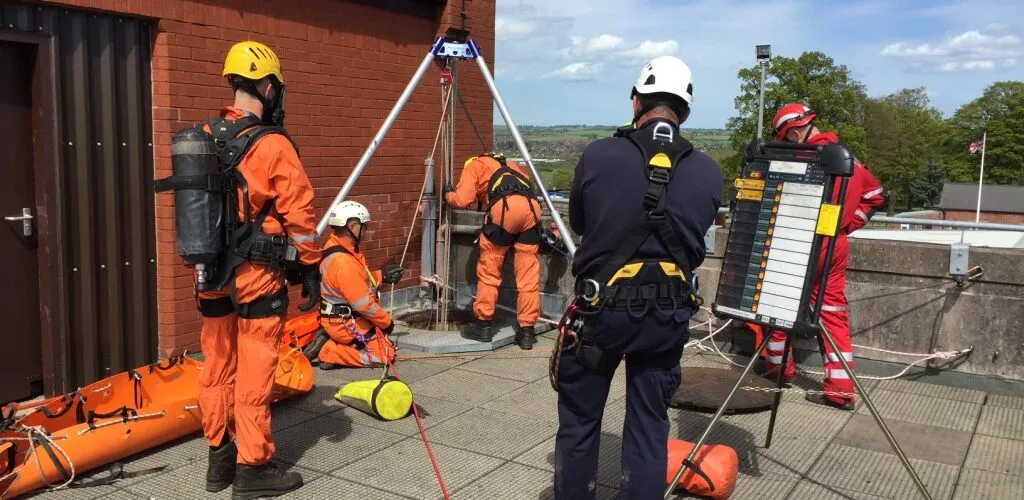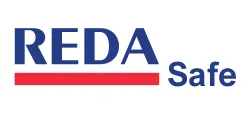Essential Gear for a Safe Confined Space Rescue

KEY TAKEAWAYS
The right equipment can facilitate a safe rescue without needing to enter the confined space.
Introduction
A confined space, not intended for continuous human occupancy, is large enough for workers to enter, yet has limited or challenging entry and exit options. These factors can complicate rescue efforts during emergencies.
If the space presents physical or atmospheric dangers, such as engulfing materials or tapered walls that may cause asphyxiation, OSHA designates it as a permit-required confined space. This classification falls under OSHA standard 1910.146, indicating immediate danger to life or health.
Due to these hazards and difficult entry and exit points, work in confined spaces is heavily regulated. Workers must use specialized equipment, monitor the atmosphere, and employers need to have a rescue plan, materials, and team ready.
Confined space rescues are seldom straightforward, making it crucial for rescuers to quickly access all necessary equipment for an efficient and safe rescue.
Essential Equipment for Confined Space Rescue
The primary equipment for confined space rescue involves non-entry, high-angle techniques, particularly when the victim is already attached to a retrieval system. Key tools include:
- Tripods: Provide a stable base for retrieval operations.
- Winches or Self-Retractable Lanyards: With a retrieval mechanism, they can safely hoist victims.
- Rescue Harnesses: Securely strap the victim for safe extraction.
However, not all confined spaces are vertical or allow for non-entry rescues. Situations involving tanks, vessels, tunnels, and equipment housings may require rescuers to physically enter and extract the victim. For such operations, additional tools are needed:
- Self-Contained Breathing Apparatus (SCBA): Ensures safe breathing for rescuers.
- Stretchers or Backboards: For securely transporting the victim.
- Static Ropes: Aid in controlled movement and extraction.
- Pulleys and Swivels: Facilitate smooth and efficient operations.
Tripods and Davit Arms
Tripods are integral to non-entry rescue systems. Their three legs create a stable platform, though they can limit access around the confined space entrance. To address this issue, tripods are typically over nine feet tall, and their legs are often connected at the base by a chain or bar.
Davit arms provide an alternative solution, only obstructing one side of the entry. Designed like a crane, they reach over the confined space entrance and offer an adjustable base, making them adaptable to various entry points. Some davit arms also feature a swivel function, enabling rescuers to turn and move the victim easily on solid ground, offering an advantage over tripods.
Both tripods and davit arms for confined space rescue must meet ANSI/AASP Z359.1 standards and comply with OSHA's confined space (1910.146) and fall protection (1910.132) regulations.
Retrieval Devices
Self-Retracting Lanyards with Rescue Capability
The most common retrieval device for confined space rescues is the self-retracting lanyard with rescue capabilities (SRL-Rs).
While they fall under the same standard as other SRL devices (ANSI Z359.14), SRL-Rs differ from regular self-retracting lanyards (SRL-P) or leading-edge models (SRL-LE). SRL-Rs not only arrest falls but also allow rescuers to raise or lower injured employees for safe retrieval.
These devices offer a significant mechanical advantage when in retrieval mode, typically around 30:1, ensuring that rescuers have the strength to lift the victim.
Switching from fall arrest to retrieval mode varies by model but is generally quick and straightforward, allowing rescues to commence almost immediately.
Self-Retracting Lanyards with Rescue Capability
A key device for confined space rescues is the self-retracting lanyard with rescue capabilities (SRL-Rs).
While SRL-Rs adhere to the same standards as other SRL devices, they differ significantly from regular self-retracting lanyards (SRL-P) and leading-edge models (SRL-LE). SRL-Rs not only arrest falls but also enable rescuers to raise or lower an injured employee.
With a mechanical advantage of around 30:1 in retrieval mode, these devices ensure rescuers can effectively lift the victim.
Switching from fall arrest to retrieval varies by model but is generally quick and easy, allowing immediate rescue response. It's important to note that SRL-Rs are primarily used in incidents, as employees typically enter and exit confined spaces independently, often by ladder.
Rescue Winches
Rescue winches are devices designed for raising and lowering without fall arrest capabilities.
They are particularly useful in confined spaces without access ladders, allowing workers to be lowered into the space via the winch and then raised back up when work is completed or if a rescue is needed.
To ensure safety in case of winch failure, workers should also be attached to a fall protection system, typically an SRL.
Additional Considerations for Retrieval Devices
Having a backup system is crucial in case the primary system fails due to malfunction, entanglement, or the victim getting stuck. Many tripods and davit arms offer attachments for secondary devices, allowing for an immediate switch from a non-entry rescue to an entry rescue by attaching a rescuer.
Rescue Harnesses
Some fall protection harnesses are specifically designed for rescue operations. However, those used in confined space rescues are generally similar to those used for fall protection.
Typically, the employee is connected to a self-retracting lanyard via the dorsal D-ring or sometimes the ventral D-ring. While this setup works in many cases, it can pose issues if rescuing an unconscious victim. Attaching at this point may cause the victim's head to deviate from the vertical, risking contact with walls and complicating extraction through narrow openings like manholes.
When using an SRL-R, it can be directly attached to a spreader bar. For combined winch and SRL setups, the winch line should attach to the spreader bar, while the SRL is used solely for fall protection, connected to the dorsal or ventral D-ring.
Conclusion
Time is crucial when rescuing a worker from a confined space. All employees involved in such rescues should be trained in selecting, setting up, and using the necessary equipment.
Conducting drills provides valuable practice, testing both equipment functionality and personnel readiness. Running through these drills in advance allows you to address potential issues before facing a real-life rescue scenario.
